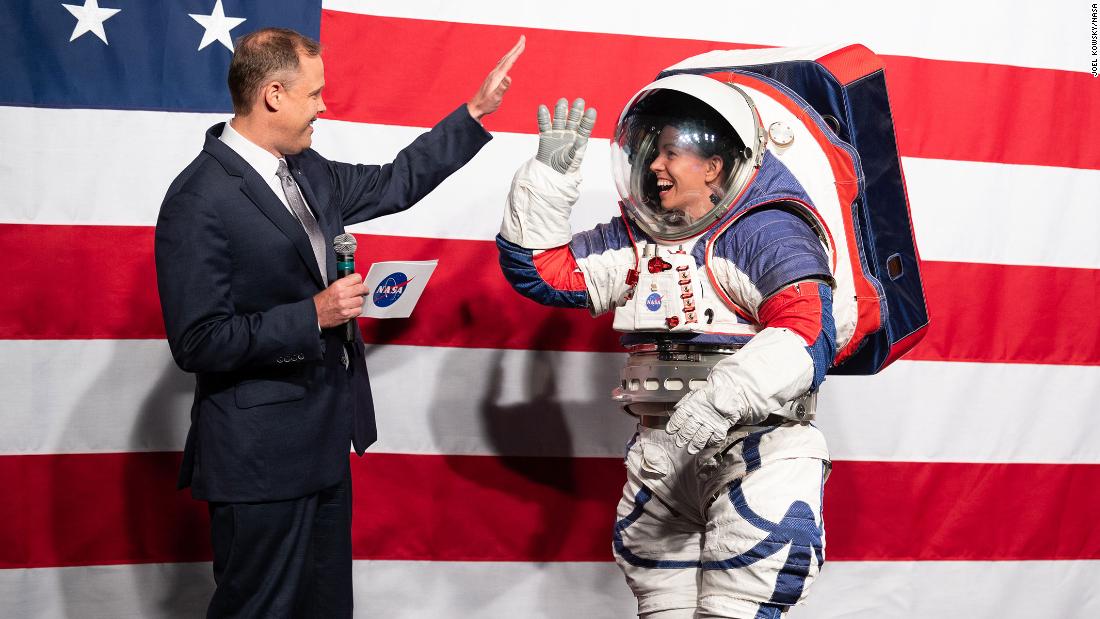
The Improvements Of NASA’s New Spacesuit
A spacesuit is a vital piece of technology to any mission in space. Whether you plan on using it on the surface of a different planet, working in the vacuum of space, or are just staying inside a rocket, a spacesuit can keep astronauts alive. This is exactly why NASA has been working on a new and upgraded spacesuit for future Artemis missions and more.
NASA’s next-generation spacesuit has many different improvements from prior models. Some of the most important include improved safety, mobility, modular design, communication, custom fit, and more. All of which makes the newest spacesuit ready for future missions to the surface of the Moon and beyond.
The technology and engineering that go into a spacesuit are immense. When building a spacesuit you are practically constructing a small spaceship designed specifically for a single human. This is part of the reason why NASA has taken so long to develop a new and improved spacesuit.
What Is The New Spacesuit?
/cdn.vox-cdn.com/uploads/chorus_asset/file/9814361/spacesuit.jpg)
There are two main types of spacesuits that are used throughout missions in space depending on the requirements. Specifically, there are intravehicular suits that are worn inside a spacecraft and there are extravehicular suits, worn outside a spacecraft. The spacesuit I am going to focus on is the xEMU or Exploration Extravehicular Mobility Unit. A spacesuit is necessary for astronauts to survive the harsh conditions of space. This includes going outside the ISS, lunar lander, or anything else. This is why NASA put a lot of funding and time to create what is essentially a personal spacecraft.
NASA has utilized spacesuits since 1959 for both types of space travel. When looking at the EMU in the past NASA initiated a design in 1974. Not too long after in 1981 the suit went into service and allowed astronauts to be safe while in the vacuum of space. Less than a decade later in 1990 NASA developed an enhanced version that is now used today for spacewalks on the ISS. The current EMU spacesuits are very old and need an update, especially considering NASA’s future plans on the Moon. This is exactly why NASA began developing a next-generation spacesuit for the Artemis missions and for future spacewalks.
New Spacesuit Improvements
Safety – No matter what mission you look at, if it involves humans then safety is the number one priority. This is exactly why no matter how good a previous model was NASA is always working to make it safer whether it’s a rocket or a spacesuit. When working on a new spacesuit NASA looked at past experiences and gained knowledge to make changes and improve safety. Specifically, the agency looked at the Apollo astronauts and their experience on the Moon. One of the big concerns of working on the surface of the Moon ended up being the soil.
Thanks to the Apollo missions NASA found out that the Moon’s soil is comprised of many glass-like shards. This creates a big concern for the possible effects on the suit and safety of the astronaut. This is why NASA added dust-tolerant features to prevent inhalation or contamination of the suit’s life support system or other spacecraft. The agency also improved the heat and cold resistance so that the suit can withstand plus and minus 250 degrees Fahrenheit. Additionally, the agency improved the technology within the suit adding warnings and other safety features if something is not working properly.
Mobility – Looking back at any of the Apollo Moon footage the issue with mobility is clear to see. The astronauts were barely if at all able to turn, bend their legs, or move like a normal human. This had to do with the suit being pressurized and not built for convenience but rather focused on safety. With the goal of a more permanent base on the Moon, astronauts will be on the surface a lot more often and need to move around with ease. NASA knows this and put a lot of work into improving the mobility of these next-generation spacesuits. Some of the things NASA added include a new lower torso that uses advanced materials and joint bearings that allow bending and rotating at the hips, increased bending at the knees, and hiking-style boots with flexible soles. On the upper torso, in addition to the updated shoulder placement, other shoulder enhancements allow astronauts to move their arms more freely and easily lift objects over their heads or reach across their body in the pressurized suit.
Communication – Communication is paramount when you are on the surface of a different celestial body over 200,000 miles away. It is also important for communicating with other astronauts on the surface. This is why NASA has redesigned the communication system inside the helmet. The new audio system includes multiple, embedded, voice-activated microphones inside the upper torso that automatically pick up the astronaut’s voice when they speak to their fellow spacewalker. This is a big improvement to past versions that often had some issues and were not very comfortable at all.
Modular Design – The new suit is designed to have certain parts interchangeable to facilitate the best performance depending on the mission and task. Whether an astronaut is using the suit for the surface of the Moon or out in space attached to the ISS, they can swap parts. NASA is even looking into the far future for possible changes when putting astronauts on the Martian surface. A specific example could be the visor of the helmet. The quick-swap function means that astronauts can replace the visor before or after a spacewalk instead of sending an entire helmet back to Earth for repairs.
Custom Fit – Finally, one last improvement of the new suits is their custom fit. Since spacesuits are so complicated it is very important that they fit perfectly. This not only improves mobility but also is necessary for safety. At NASA’s Johnson Space Center, astronauts undergo full-body, 3D scans while performing basic motions and postures expected during spacewalks. NASA then uses the complete 3D model to create a suit that fits each astronaut perfectly.
When Will They Be Ready?

While NASA’s new spacesuit has a lot of improvements for future missions, the development process has not been so smooth. Thanks to a long list of reasons a lot of aspects of the spacesuits are behind schedule. The suits are necessary for landing and working on the Moon to the point where the delay could end up pushing back the Artemis mission as a whole. The spacesuits are supposed to be ready by 2024 right when the first Artemis launch happens. Looking in the past however it becomes clear why the spacesuits are having issues with delays. At the start of development, the next-generation spacesuits were meant to be ready for 2028. A few years ago that date was changed to 2024. This meant NASA had to speed up the process quite significantly. Additionally, there was a large budget cut meaning NASA didn’t have nearly as much funding for the spacesuits as expected. These issues along with some others are delaying the spacesuit and jeopardizing the future Artemis timeline.
Conclusion
NASA has put a lot of work into the next generation spacesuits. With plans of many future spacewalks and the even more daunting task of setting up a human base on the Moon, a high-quality spacesuit is necessary. NASA knows this and has made some improvements to the new xEMU spacesuit. Some of the main upgrades include better safety, mobility, communication, modular design, and custom fit. All of which will help astronauts stay safe and work in the dangerous conditions of space. However, the suit development is not going perfectly and is facing some delays. As time goes on we will have to see if NASA can finish the suits in time and their future use throughout space.
